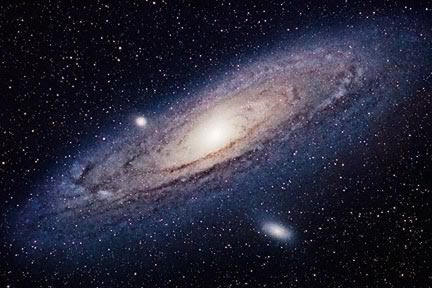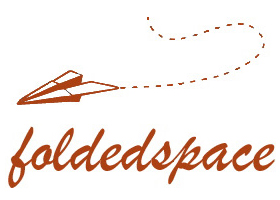 We lived in the country when I was a boy, far from the city lights. My father would take me outside at night and point to the stars. “That’s Orion,” he’d say, and he would help me trace The Hunter’s outline. “That’s the Big Dipper. The Big Dipper isn’t really a constellation, but it’s like one. And do you see that big red star over there? The one that doesn’t twinkle? That’s the planet Mars.”
We lived in the country when I was a boy, far from the city lights. My father would take me outside at night and point to the stars. “That’s Orion,” he’d say, and he would help me trace The Hunter’s outline. “That’s the Big Dipper. The Big Dipper isn’t really a constellation, but it’s like one. And do you see that big red star over there? The one that doesn’t twinkle? That’s the planet Mars.”
I was in awe. A life-long love of space grew from this stargazing. Other astronomy highlights from my youth include:
- Sleeping outside to watch meteor showers.
- Viewing the surface of the moon through a telescope.
- Visits to the Kendall Planetarium and its skyshows.
- Watching Carl Sagan’s Cosmos.
- Founding a short-lived college astronomy club with two friends — we took people out to nearby farms to look at the stars.
Astronomy is a perfect low-cost hobby to share with children. If you want to introduce a kid to naked-eye astronomy, or if you’re curious yourself, find a copy of H.A. Rey‘s The Stars: A New Way to See Them. Rey — best-known for creating Curious George — published this book in 1952, but it’s just as useful today. How good is it? It was one of the texts for my college-level astronomy class. All 45 reviews at Amazon give the book five stars.
Rey writes:
This book is meant for people who want to know just enough about the stars to be able to go out at night and find the major constellations, for the mere pleasure of it.
- A brief introduction to naked-eye astronomy
- Seventeen constellation charts that make it simple to pick out their shapes in the stars.
- A timetable and series of star charts to help you find the constellations in any season.
- A fifty-page survey of more esoteric astronomy topics, such as declination and right ascension, azimuth and the ecliptic, the procession of the equinoxes, and more. This section is at the back of the book, and perfect for adults who want to learn more, or for curious older children.
Normally I’d recommend borrowing this book from your local library, but The Stars: A New Way to See Them is so good and so useful that it’s worth spending ten bucks to own it. That one expenditure is all you need to enjoy naked-eye astronomy as a hobby.
Fun and easy astronomy projects include:
- Create a list of the brightest stars and check them off as you see them.
- Learn where the planets are in the sky and attempt to identify them.
- Choose one constellation a week. Learn its shape and its relative position in the sky. Research lore about it and the stars that create its shape.
- Make an astronomy scavenger hunt for your kids or for your spouse.
- Spend a month observing the changing phases of the moon. It can be startling for kids to realize that the moon isn’t always out at night. The reasons for this can be difficult to understand, even for adults.
- Read about famous astronomers and what they contributed to the science.
- If you own a pair of binoculars, explore objects like the Pleiades and the Andromeda Galaxy.
A knowledge of the night sky makes camping more enjoyable. It even makes sitting in the back yard on a summer evening more enjoyable!

GRS-reader Fraser, host of the astronomy weblog Universe Today, helped produce a free e-book for astronomy enthusiasts. He writes:
Astronomy is an excellent and cheap hobby. I haven’t spent a penny on it in years. Earlier this year, I released a free 400+ page book containing things to see every night of the year. We’re working on the 2007 version now, and it’ll be free too. There’s great advice in the book about how to get started, as well as plenty of links in the back.
Universe Today is a fine source for astronomy information. Other sites that I’ve found useful or fun include:
- Jack Horkheimer: Stargazer includes video segments for free download (in ugh RealPlayer format)
- NASA’s Astronomy Picture of the Day
- Nick Strobel’s Astronomy Without a Telescope
- This thread at AskMetafilter: What’s your favorite astronomy photo?
The news of Pluto’s demotion from Planet to Dwarf Planet sent shock-waves among the children I know. “If they can change this, they can change other things,” said precocious nine-year-old Lydia. “So why should I bother to learn anything?”
(“That’s science,” said my wife, a scientist. “It’s constantly changing as we learn more.”)
Six-year-old Antonio is concerned, too. He enters first grade this week, and he’s been learning about the solar system at home. He has a book on every planet, including Pluto. But now that it’s not a planet any more, what is he to do?
It’s great to see kids concerned about the subject. I love that their parents have taken the time to share the planets with them. Astronomy is a fun and inexpensive way to explore the universe around us.


We do that here with our 3 boys. I love watching their faces when they have discovered a new constellation.
Free software is a great way to save money too, and there are two great pieces of space/star software:
1) Stellarium: You’re in a field looking at the sky. You enter your coordinates, and the sky as it looks at the moment is displayed. You can fast-forward/rewind the time, watching the stars progress and the sun and moon rise and set. You can toggle the constelations outlines. Lots of cool features, short learning curve. Very fun!
http://www.stellarium.org/
2) Celestia: You can zoom arround space, visiting other planets and stars, and even viewing the milky-way from far off. Not exactly good for constelation viewing, but it can give a better perspective on scale in the universe. It’s got a slightly longer learning curve, but it’s really fun to use.
http://www.shatters.net/celestia/
Both run on Linux, Windows and OSX.
Tip: If you’re using stellarium outside at night, get some red plastic paper (like that clear plastic giftwrap) to cover your monitor with so you don’t ruin your night vision.
I’ll second the Stellarium rec – you can not only toggle outlines of the constellations, but you can toggle pictures of what they represent as well. I could spend hours playing with this program…
I just discovered your blog, and am very eager to poke around — so much interesting material here. You might be interested in my blog project, which sounds a bit like yours: this year, I’m test-driving all tips, rules, scientific studies, and wisdom of the ages about how to be happy, and reporting on what works. Today I wrote about a piece on money and happiness that I did for the Wall Street Journal Online–also an issue of interest to you. Ok, now I’m off to read your survey, “What Does Money Mean to You?” Congrats on a great site — be happy! Gretchen